
Common Snake Species in New Orleans
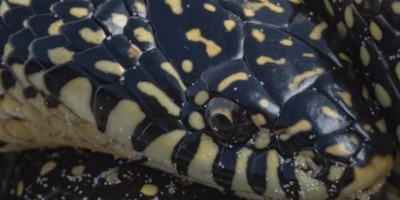 Speckled kingsnake:
The speckled kingsnake is a large constrictor. It is also known as the salt and pepper snake. The snakes have a small head, which is almost the same size as their neck. They have black or red eyes and a slim, smooth body. Although there are many variations in colors, kingsnakes generally have a black or dark body, with light yellow or tiny white spots down their backs. The underside of the snake is pale cream or a pale shade of yellow. They can grow up to a length of 48 inches. They have a preference for damp places like swamps, marshes, open fields, pastures, near water bodies, and woodlands. They feed on different prey, including small mammals, frogs, birds, and other snake species.
Speckled kingsnake:
The speckled kingsnake is a large constrictor. It is also known as the salt and pepper snake. The snakes have a small head, which is almost the same size as their neck. They have black or red eyes and a slim, smooth body. Although there are many variations in colors, kingsnakes generally have a black or dark body, with light yellow or tiny white spots down their backs. The underside of the snake is pale cream or a pale shade of yellow. They can grow up to a length of 48 inches. They have a preference for damp places like swamps, marshes, open fields, pastures, near water bodies, and woodlands. They feed on different prey, including small mammals, frogs, birds, and other snake species.
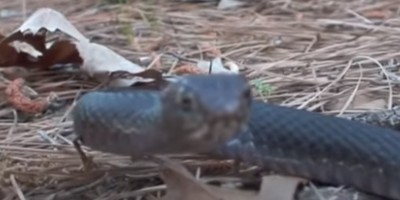 Coachwhip snake:
The snake has a dark brown or black head that progressively becomes pale in color towards the tail. The belly of the snake is pale white or pink. Young snakes have irregularly arranged black crossbars on their back, over a tan background color. The coachwhip snake has seventeen rows of smooth scales. They have a length of 41-84 inches. They live in mixed woods and dry open pinelands. Their diet consists of invertebrates, lizards, and other snakes.
Coachwhip snake:
The snake has a dark brown or black head that progressively becomes pale in color towards the tail. The belly of the snake is pale white or pink. Young snakes have irregularly arranged black crossbars on their back, over a tan background color. The coachwhip snake has seventeen rows of smooth scales. They have a length of 41-84 inches. They live in mixed woods and dry open pinelands. Their diet consists of invertebrates, lizards, and other snakes.
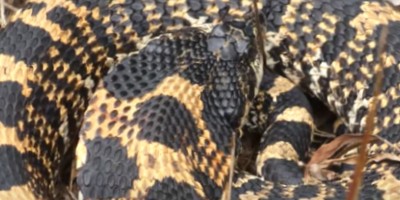 Eastern hog snake :
The eastern hog snake can easily be identified by the pointed edge of its upturned snout in front of the face. There is a color variation, from grey or black down to the back, with dark blotches, while some species have black with red patterns along the sides and stomach. Young ones are lighter in color and have a pinkish or orange tan. They have a length of 25-33 inches. The eastern hog snake can be found throughout the non-wetland regions of the state and along the margins of wetlands. They feed mostly on toads and frogs.
Eastern hog snake :
The eastern hog snake can easily be identified by the pointed edge of its upturned snout in front of the face. There is a color variation, from grey or black down to the back, with dark blotches, while some species have black with red patterns along the sides and stomach. Young ones are lighter in color and have a pinkish or orange tan. They have a length of 25-33 inches. The eastern hog snake can be found throughout the non-wetland regions of the state and along the margins of wetlands. They feed mostly on toads and frogs.
Venomous Snake Species in New Orleans
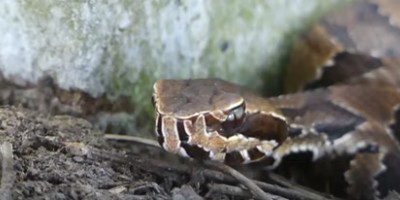 Cottonmouth snake:
This venomous snake can grow between 15-55 inches. The cottonmouth snake is dark tan, brown, or almost black, with dark black or dark brown crossbands. The snake has a black head with white lines running from the eyes to the corner of the mouth. Young ones have a pink or orange ground color, with dark brown crossbands on them, and a yellow tail. Some mature snakes possess the patterns of the young snakes. Cottonmouth snakes are found in swamplands, lakes, stream borders with dense canopies, and ponds. Cottonmouth snakes have a diet that consists of fish, mammals, turtles, frogs, tadpoles, lizards, birds, bird eggs, salamanders, and other snakes.
Cottonmouth snake:
This venomous snake can grow between 15-55 inches. The cottonmouth snake is dark tan, brown, or almost black, with dark black or dark brown crossbands. The snake has a black head with white lines running from the eyes to the corner of the mouth. Young ones have a pink or orange ground color, with dark brown crossbands on them, and a yellow tail. Some mature snakes possess the patterns of the young snakes. Cottonmouth snakes are found in swamplands, lakes, stream borders with dense canopies, and ponds. Cottonmouth snakes have a diet that consists of fish, mammals, turtles, frogs, tadpoles, lizards, birds, bird eggs, salamanders, and other snakes.
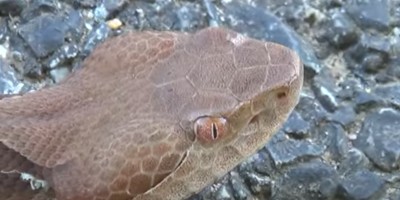 Copperhead snake:
The copperhead snake has a beige, tan, or dull gray color. Most times, there is a fair tinge of pale pink, or orange, with cross bands irregularly shaped like an hourglass, that is pale a bit on the lower sides of the snake. The head of the snake has no pattern but sometimes has a fair tinge of orange and pale yellow on the sides too. The young ones have a yellow tail, while the adults do not. Copperhead snakes have a length of 14-45 inches. They are found in edges of woodlands, ivy thickets, and south-facing slopes. They feed on small snakes, small birds, lizards, amphibians, and cicadas.
Copperhead snake:
The copperhead snake has a beige, tan, or dull gray color. Most times, there is a fair tinge of pale pink, or orange, with cross bands irregularly shaped like an hourglass, that is pale a bit on the lower sides of the snake. The head of the snake has no pattern but sometimes has a fair tinge of orange and pale yellow on the sides too. The young ones have a yellow tail, while the adults do not. Copperhead snakes have a length of 14-45 inches. They are found in edges of woodlands, ivy thickets, and south-facing slopes. They feed on small snakes, small birds, lizards, amphibians, and cicadas.
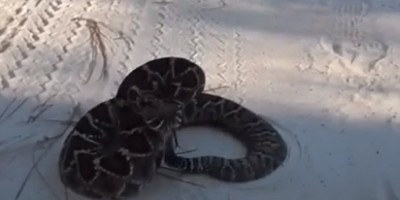 Eastern diamondback snake:
The eastern diamondback is the largest and most venomous snake. The snake has a brown to brownish-yellow ground color, with progressive dark, brown, or black diamond-shaped patterns down the back, rimmed with cream or yellow scales. They can grow up to a length of 8 feet. The eastern diamondback lives in pine flatwoods, coastal scrub, and sandy woodlands. They feed on small mammals like rabbits, squirrels, and birds.
Eastern diamondback snake:
The eastern diamondback is the largest and most venomous snake. The snake has a brown to brownish-yellow ground color, with progressive dark, brown, or black diamond-shaped patterns down the back, rimmed with cream or yellow scales. They can grow up to a length of 8 feet. The eastern diamondback lives in pine flatwoods, coastal scrub, and sandy woodlands. They feed on small mammals like rabbits, squirrels, and birds.